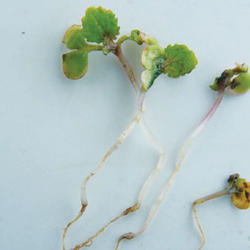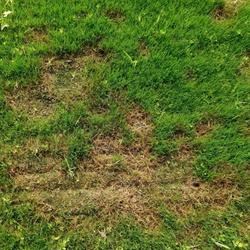‘Damping Off’ disease
‘Damping Off’ is a disease caused by a number of different soil-borne fungal pathogens that infect seedlings. The fungal pathogens Fusarium, Pythium and Rhizoctonia solani are present in most soils throughout New Zealand. They are present in cultivated seed-beds and in no-tillage situations where they thrive on decaying plant material. Plants are most vulnerable to ‘Damping Off’ disease during the seed establishment period, with weak or stressed seedlings particularly vulnerable. Plant infection and fungal growth can occur over a wide range of soil conditions, with Pythium and Rhizoctonia preferring moist soil conditions and Fusarium preferring drier soils.
Symptoms of ‘Damping Off’ disease
‘Damping Off’ disease can occur at the pre-emergent or post-emergent stages of plant development, which can result in a poor, uneven stand of seedlings. In the pre-emergent stage seeds may be infected as soon as moisture penetrates the seed coat or slightly after germination as the radicle begins to extend with seedlings failing to emerge. In the post- emergent stage infected cotyledons may break the soil surface before suddenly withering up and dying, or healthy looking seedlings may discolour at the shoot base, wilt suddenly before collapsing and dying. ‘Damping Off’ disease is easily confused with plant injury caused by insect feeding, excessive fertilisation, excessive heat or cold, excessive or insufficient soil moisture, or chemical damage to seedlings.
Protection and control
- Ultrastrike brassica, Superstrike brassica, Superstrike grass, Prillote grass, Superstrike lucerne or Vitaflo maize seed treatment for protection during plant establishment.
- Contact fungicide.




